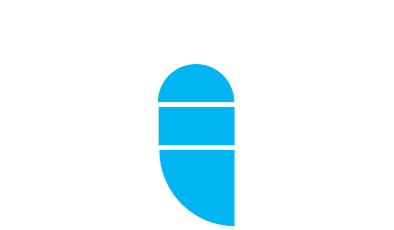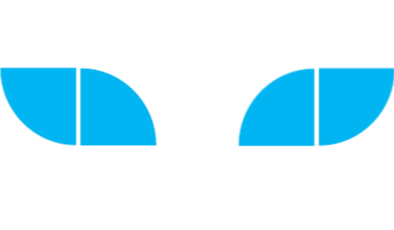10 FAQ's about UL Certification
2. Which different types of UL seals are available?
3. Where are the certification areas of UL?
4. What does the UL mark stand for?
5. For which markets is the UL certification particularly relevant?
6. Are Auer Signal Products UL certified?
7. How many UL standards exist?
8. Which UL equipment classification-types exist?
9. How does UL differ from other markings?
10. What does the "Recognized Component Index marking" mean?
About Auer Signal
Auer Signal is a global leading manufacturer of signaling technology, operational in 70+ countries. The company produces stack lights, visual-, audible-, visual-audible and explosion proof signaling devices.
Discover Signaling Devices NOW!What does UL mean?
Underwriters Laboratories Inc. (UL) is one of the world's most important independent organizations for the safety testing and certification of materials, components and end products and develops standards and procedures for these tests and certifications. More than 1,300 safety standards have already been developed by United Laboratories.
UL was founded in 1894. The headquarters are located in Northbrook, Illinois, USA. UL also has offices in North America, Asia, Africa, Europe, the Middle East and Latin America. The headquarters for Europe and Latin America is UL International Germany GmbH in Neu-Isenburg, near Frankfurt.
As one of the few companies, UL is also approved by the Occupational Safety and Health Administration (OSHA), a US federal agency.
UL testing covers not only materials, components and products, but also the entire production process.
Which different types of UL seals are available?
There are various UL marks. The most well-known marks are the "UL Listing Mark", the "US Recognized Component Mark" and the "UL Classification Mark". Since there are different standards in the USA and also in Canada (defined by the standards of the CSA, Canadian Standards Association), manufacturers have the possibility to obtain a test mark from UL by means of a single certification process, which has the letters "C" and "US" on the side of the UL logo.
UL approval markRepresentative samples of a product have been tested by UL. The product complies with UL's applicable safety requirements. | |||
UL Recognized Component MarkA component that has been recognised by UL may be used in a product that bears the UL Listing Mark. | |||
UL classification markProducts that have been evaluated by UL for certain characteristics to confirm their suitability for use under certain conditions and to exclude risks bear the UL Classification Mark. |
Where are the certification areas of UL?
Underwriters Laboratories has made it its mission to test products for their safety. Fire protection was then, as now, a major priority. UL initially covered the areas of fire protection and electrical safety. In 1903, the American organization published its first standard called "Tin Clad Fire Doors" (https://standardscatalog.ul.com/standards/en/standard_10a_21, updated). These doors were mainly used in public areas such as schools and hospitals.
When consumer behavior rose sharply in 1946 and new developments took the markets by storm, UL increased its campaigning to raise awareness of product safety. Until 1954, however, the focus was exclusively on products manufactured in America. International expansion followed in 1956. From then on, products manufactured in Europe and intended for trade on the American market were also certified.
Over the past 126 years, UL has greatly expanded the scope of certification and now covers many areas such as food safety, aviation safety (drones), and hazardous materials. Consumers around the world trust the UL certification.
What does the UL Mark stand for?
Some products present a risk of fire, mechanical hazard and electrical shock. They must therefore meet special standards to be considered safe. To obtain the UL Mark, manufacturers must demonstrate compliance with applicable safety requirements. UL tests and certifies these products if they meet the Standards and awards the UL Mark.
Not only new products, but also existing products or production processes that are modified must be tested by UL to carry the Mark.
For which markets is the UL certification particularly relevant?
Especially on the North American market UL is an important certification for devices. But UL is also a recognized and important mark of approval worldwide when it comes to product safety.
Are Auer Signal products UL certified?
A large number of Auer Signal's signaling devices are certified according to UL standards due to the company's worldwide market presence. Through its membership in the "Client Test Data Program", Auer Signal is authorized to perform UL-relevant tests in its own laboratory. To verify the quality of the results, periodic repeat tests are performed by UL itself.
How many UL standards exist?
The UL Standards Catalogue contains a wide range of standards. From UL1 "Standard for Flexible Metal Conduit" to UL94 "Tests for Flammability of Plastic Materials for Parts in Devices and Appliances", the catalog ends with UL920401 "Performance Requirements for Instruments Used to Detect Oxygen-Deficient/Oxygen-Enriched Atmospheres".
Which UL equipment classification-types exist?
There are different classifications depending on the indoor or outdoor use and the protection class:
Type 1Mainly indoor use, protection against contact with the closed unit and against a limited amount of falling dust/dirt. | Type 2Indoor use, appropriate protection against a limited amount of water and dust. | Type 3Outdoor use, protection against windblown dust and rain; unit is not affected by the formation of a layer of ice on the enclosure. |
Type 3ROutdoor use, protection against rain; unit is not affected by the formation of a layer of ice on the enclosure. | Type 4Indoor or outdoor use, protection against rain, splashing water and jet-directed water; not affected by the formation of a layer of ice on the enclosure. | Type 4XIndoor or outdoor use, protection against rain, splash water and jet-directed water; not affected by the formation of a layer of ice on the enclosure, resists corrosion. |
Type 6Indoor or outdoor wiring, protection against ingress of water during temporary immersion/submersion or flooding at limited depth. Not affected by the formation of an external layer of ice on the enclosure. | Type 12Indoor use, protection against dust, dirt, flying fibres, dripping water and external condensation of non-corrosive liquids. | Type 13Indoor use, protection against lint, dust seepage, external condensation and splashing water, oil and non-corrosive liquids. |
How does UL differ from other markings?
In contrast to the CE marking, the UL marking is not required by law. Many manufacturers, such as Auer Signal, nevertheless have their products certified by UL, as product safety and insurance protection play an important role. However, further trade with the products can also prove difficult if a product does not bear a UL mark. Wholesalers can refuse to supply a product without the UL Mark. Authorities such as building authorities but also fire safety officers can also refuse to install products or equipment if they do not have a test seal.
Although the UL marking, like the CE marking, is not a proof of quality, the test seal is a proof for users that the product meets a high safety standard.
UL differs from the IEC (International Electrotechnical Commission) marking in the requirements for product safety. IEC standards are limited to minimum requirements for the safety of a product and leave further implementation to the manufacturer. UL regulates the requirements for product safety in much more detail and also checks itself whether the requirements are met.
The CSA, Canadian Standards Association, is also an independent organization for the testing and certification of products. Together with UL, it has agreed that testing and certification to North American standards will be mutually recognized, allowing manufacturers to apply for either the CSA or UL marking.
Find out more about the various worldwide UL certification symbols.
What does the "Recognized Component Index marking" mean?
To simplify the complex certification process for manufacturers, UL published the first edition of the Recognized Component Index in 1966, which included previously certified components and materials that could be used in products. Such components still exist today. By means of a "Recognized Component Index marking", manufacturers can indicate on their products that the corresponding component has been tested and certified.






 ()
()
